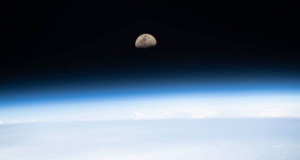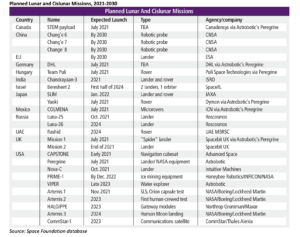NASA Lunar Spending Grows as Moon Missions Near

A first quarter Moon is pictured as the International Space Station orbited 265 miles above the South Pacific. Credit: NASA
In 2020 alone, NASA and its international partner, the European Space Agency, approved contracts with maximum values worth more than $11.5 billion for landers, crew transport, space modules and scientific equipment in preparation for the Artemis mission.
By the end of 2021, nine countries expect to have landers or rovers exploring for ice and water, measuring solar radiation, collecting regolith — or Moon dust — evaluating possible sites for human settlement, and taking the first steps toward developing space-based industries from its resources. By the end of the decade, that total is expected to be more than a dozen. With advancements in space technology, lower launch costs, and growing investor confidence, the Moon is about to undergo more exploration and development than at any time in history.

NASA Administrator Jim Bridenstine explained the priority of Moon missions during an October presentation for Space Foundation’s Space Symposium 365.
“We go to the Moon to learn how to live and work on another world for long periods of time so that we can ultimately go to Mars. That’s the goal,” Bridenstine said. “We think about the Moon as the proving ground. We’re going to go with commercial partners. We’re going to go with international partners, and we’re going to go to learn how to live and work using the resources of the Moon. Ultimately, we’re going to take all this knowledge, and we’re going to Mars.”
The Space Report 2020 Q4, scheduled for release Jan. 21, examines the developing cislunar and Moon economy, upcoming missions and the space industries expected to evolve from exploration.
Learn about subscription options here.